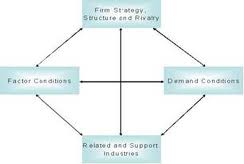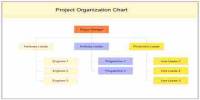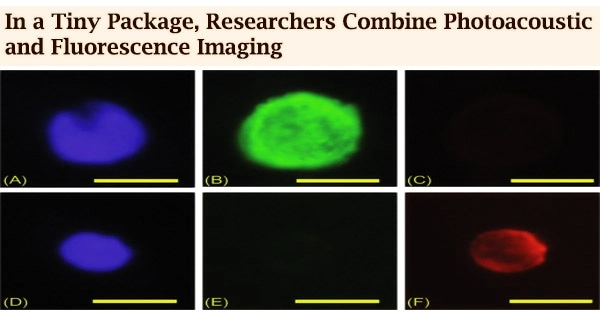Porters Diamond of National Advantage
The Porter Diamond is a model that helps analyze and improve a nation’s role in a globally competitive field. The model was developed by Michael Porter, who is recognized as an authority on company strategy and competition; it is a more proactive version of economic theories that quantify comparative advantages for countries or regions. Classical theories of international trade propose that comparative advantage resides in the factor endowments that a country may be fortunate enough to inherit. Factor endowments include land, natural resources, labor, and the size of the local population.
Michael E. Porter argued that a nation can create new advanced factor endowments such as skilled labor, a strong technology and knowledge base, government support, and culture. Porter used a diamond shaped diagram as the basis of a framework to illustrate the determinants of national advantage. This diamond represents the national playing field that countries establish for their industries.
Porter’s Diamond of National Advantage
Firm Strategy, | ||||||||
Factor | Demand | |||||||
Related and | ||||||||
The individual points on the diamond and the diamond as a whole affect four ingredients that lead to a national comparative advantage. These ingredients are:
- the availability of resources and skills,
- information that firms use to decide which opportunities to pursue with those resources and skills,
- the goals of individuals in companies,
- the pressure on companies to innovate and invest.
The points of the diamond are described as follows.
I. Factor Conditions
- A country creates its own important factors such as skilled resources and technological base.
- The stock of factors at a given time is less important than the extent that they are upgraded and deployed.
- Local disadvantages in factors of production force innovation. Adverse conditions such as labor shortages or scarce raw materials force firms to develop new methods, and this innovation often leads to a national comparative advantage.
II. Demand Conditions
- When the market for a particular product is larger locally than in foreign markets, the local firms devote more attention to that product than do foreign firms, leading to a competitive advantage when the local firms begin exporting the product.
- A more demanding local market leads to national advantage.
- A strong, trend-setting local market helps local firms anticipate global trends.
III. Related and Supporting Industries
- When local supporting industries are competitive, firms enjoy more cost effective and innovative inputs.
- This effect is strengthened when the suppliers themselves are strong global competitors.
IV. Firm Strategy, Structure, and Rivalry
- Local conditions affect firm strategy. For example, German companies tend to be hierarchical. Italian companies tend to be smaller and are run more like extended families. Such strategy and structure helps to determine in which types of industries a nation’s firms will excel.
- In Porter’s Five Force model, low rivalry made an industry attractive. While at a single point in time a firm prefers less rivalry, over the long run more local rivalry is better since it puts pressure on firms to innovate and improve. In fact, high local rivalry results in less global rivalry.
- Local rivalry forces firms to move beyond basic advantages that the home country may enjoy, such as low factor costs.
















